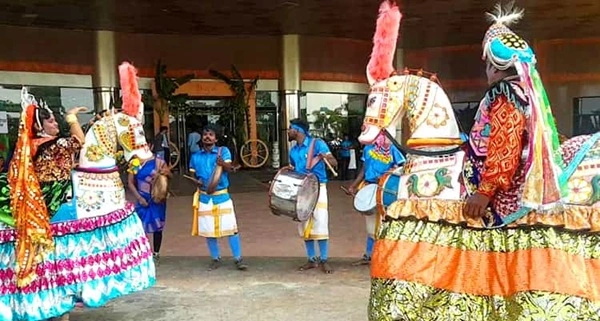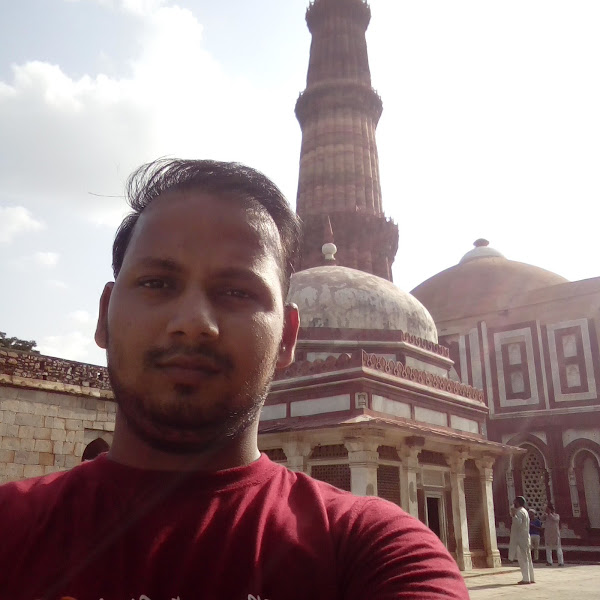Tamil Nadu, the land of temples and traditions, holds a prestigious place in India’s cultural map. Known for its ancient Dravidian heritage, this southern state is home to rich art forms, music, literature, and architecture. Among its diverse cultural treasures, the traditional and folk dances of Tamil Nadu showcase the soul of the Tamil people—their devotion, storytelling, festive celebrations, and connection with nature.
While Bharatanatyam stands as the most renowned classical dance form with origins in temple rituals, Tamil Nadu also boasts a variety of folk dances that are deeply woven into rural life. These dances are performed during temple festivals, harvest celebrations, marriages, and village fairs, carrying forward centuries of tradition.

Major Traditional and Folk Dances of Tamil Nadu
| Dance Name | Type | Region/Community | Short Description |
| Bharatanatyam | Classical Dance | Thanjavur, Chennai | The most famous classical dance of Tamil Nadu, rooted in temple traditions. |
| Karagattam | Folk / Ritual | Across Tamil Nadu | Women balance decorated pots on their heads while dancing. |
| Kavadi Aattam | Devotional Folk | Palani Hills region | Dance performed by devotees of Lord Murugan carrying decorated structures. |
| Mayilattam | Ritual Dance | Murugan temples | Peacock dance performed in devotion to Lord Murugan. |
| Poikkal Kuthirai | Storytelling Folk | Rural Tamil Nadu | Men dance wearing dummy horse costumes. |
| Oyilattam | Group Folk Dance | Southern Tamil Nadu | Performed by men in rhythmic steps with colorful handkerchiefs. |
| Kolattam | Festive Folk | Villages across TN | Women dance in circles using decorated sticks. |
| Bommalattam | Puppet Dance | Villages & Fairs | Storytelling through colorful puppets. |
| Parai Aattam | Ritual / Folk | Ancient Tamil tribes | One of the oldest dances performed with the Parai drum. |
| Kai Silambu Attam | Devotional Folk | Amman temples | Performed with anklet bells and small cymbals during festivals. |
Detailed Explanation of Major Dances
- Bharatanatyam – The Divine Classical Dance
- Origin: One of the oldest classical dances in India, dating back over 2,000 years, traditionally performed in temples to express devotion to deities.
- Cultural Significance: Represents Bhakti (devotion) and storytelling through mudras (hand gestures), abhinaya (expressions), and rhythmic footwork.
- Costumes: Bright silk sarees with pleats, temple jewelry, ghungroos (anklets).
- Instruments: Nattuvangam (cymbals), mridangam, veena, flute.
- Occasions: Performed in temples, cultural festivals, and dance programs.
- Image Suggestion: Bharatanatyam dancer in traditional costume with temple backdrop.
- Karagattam – The Pot-Balancing Dance
- Origin: A ritual dance dedicated to Goddess Mariamman, associated with rain and fertility.
- Cultural Significance: Dancers balance pots (Karagam) decorated with flowers, balancing skill with rhythmic movements.
- Costumes: Colorful saris for women, dhotis for men, decorated headgear.
- Instruments: Nadaswaram, thavil (drums).
- Occasions: Temple festivals, harvest celebrations.
- Image Suggestion: Women balancing flower-decorated pots on heads while dancing.
- Kavadi Aattam – Dance of Devotion
- Origin: Associated with the worship of Lord Murugan, particularly during the Thaipusam festival.
- Cultural Significance: Devotees carry decorated wooden structures (Kavadi) as an act of penance and devotion.
- Costumes: Bright dhotis, turbans, and kavadi structures decorated with peacock feathers and flowers.
- Instruments: Drums, nadaswaram.
- Occasions: Murugan festivals, especially Thaipusam in Palani Hills.
- Image Suggestion: Devotees carrying decorated kavadi on shoulders.
- Mayilattam – The Peacock Dance
- Origin: Devotional dance in honor of Lord Murugan, whose vehicle is the peacock.
- Cultural Significance: Dancers dress as peacocks, symbolizing divine energy and beauty.
- Costumes: Peacock feathers, headgear, and body paint.
- Instruments: Mridangam, flute.
- Occasions: Murugan temple festivals.
- Image Suggestion: Performer in peacock costume dancing at temple grounds.
- Poikkal Kuthirai Aattam – The Dummy Horse Dance
- Origin: A storytelling folk dance performed in rural villages.
- Cultural Significance: Symbolizes valor and entertainment, often narrating local legends.
- Costumes: Dancers wear horse-shaped structures around their waist, colorful attire, turbans.
- Instruments: Drums, nadaswaram.
- Occasions: Village fairs, harvest festivals.
- Image Suggestion: Man performing with dummy horse costume.
- Oyilattam – The Dance of Grace
- Origin: Popular in southern Tamil Nadu, especially Tirunelveli.
- Cultural Significance: Performed by men, representing unity and rural life.
- Costumes: Colorful dhotis, men tie handkerchiefs around their fingers.
- Instruments: Parai, udukkai, thavil.
- Occasions: Village gatherings, festivals.
- Image Suggestion: Group of men performing Oyilattam in a circle.
- Kolattam – The Stick Dance
- Origin: Ancient folk dance performed by women across Tamil Nadu.
- Cultural Significance: Symbolizes joy, togetherness, and festive spirit.
- Costumes: Bright saris, decorative jewelry.
- Instruments: Songs, drums, and sticks creating rhythm.
- Occasions: Navratri, temple festivals, Pongal.
- Image Suggestion: Women dancing with decorated sticks in circles.
- Bommalattam – The Puppet Dance
- Origin: Ancient storytelling art form performed in villages.
- Cultural Significance: Puppeteers narrate mythological stories, moral lessons, and folklore.
- Costumes: Colorful wooden puppets in traditional attire.
- Instruments: Drums, harmonium, nadaswaram.
- Occasions: Temple fairs, rural festivals.
- Image Suggestion: Puppeteer holding strings of decorated puppets
- Parai Aattam – The Drum Dance
- Origin: One of the oldest dances, historically used to announce victories or village gatherings.
- Cultural Significance: Symbolizes strength, unity, and social awareness.
- Costumes: Simple dhotis, anklets.
- Instruments: Parai drum.
- Occasions: Temple festivals, community events.
- Image Suggestion: Group of men playing Parai drums while dancing.
- Kai Silambu Attam – The Dance with Cymbals
- Origin: Performed in Amman temples as part of devotional rituals.
- Cultural Significance: Women wear anklet bells and shake silambu (small metal cymbals) in rhythm.
- Costumes: Vibrant saris, temple jewelry.
- Instruments: Silambu (anklets), nadaswaram.
- Occasions: Mariamman temple festivals.
- Image Suggestion: Women dancing with anklet bells in temple courtyards.
FAQs
Q1. Which is the most famous dance of Tamil Nadu?
👉 The Bharatanatyam dance is the most famous classical and traditional dance of Tamil Nadu, recognized globally.
Q2. How many folk dances does Tamil Nadu have?
👉 Tamil Nadu has over 15 folk dances, including Karagattam, Kavadi Aattam, Oyilattam, Kolattam, and Mayilattam.
Q3. Which dance of Tamil Nadu is performed with puppets?
👉 The Bommalattam (puppet dance) is performed using colorful wooden puppets to narrate stories.
Q4. Which dance is dedicated to Lord Murugan?
👉 Kavadi Aattam and Mayilattam are dedicated to Lord Murugan, performed during festivals like Thaipusam.
Conclusion
The traditional and folk dances of Tamil Nadu represent the soul of Tamil culture. They not only entertain but also narrate stories of gods, community life, bravery, and devotion. While Bharatanatyam reflects the spiritual essence of temple traditions, folk dances like Karagattam, Kavadi, and Oyilattam showcase the joy and vibrancy of rural Tamil Nadu.
Together, these dances form a living cultural heritage, connecting modern Tamil society with its glorious past. They are a symbol of Tamil identity, devotion, and celebration, making Tamil Nadu one of the richest cultural states in India

Hello, I’m Kapil Kumar, a seasoned SEO expert and blogger at WinnersList.in. My mission is to spotlight exceptional individuals and organizations across various domains. Through curated lists, profiles, and inspiring stories, I aim to celebrate outstanding achievements and inspire the next generation of champions. Join me in this journey.
